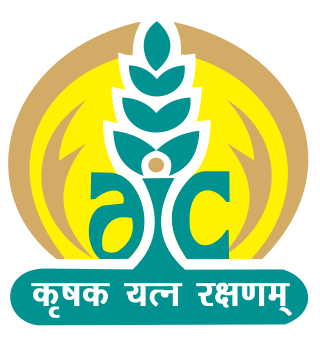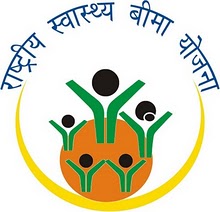Related Research Articles
Health insurance or medical insurance is a type of insurance that covers the whole or a part of the risk of a person incurring medical expenses. As with other types of insurance, risk is shared among many individuals. By estimating the overall risk of health risk and health system expenses over the risk pool, an insurer can develop a routine finance structure, such as a monthly premium or payroll tax, to provide the money to pay for the health care benefits specified in the insurance agreement. The benefit is administered by a central organization, such as a government agency, private business, or not-for-profit entity.
National health insurance (NHI), sometimes called statutory health insurance (SHI), is a system of health insurance that insures a national population against the costs of health care. It may be administered by the public sector, the private sector, or a combination of both. Funding mechanisms vary with the particular program and country. National or statutory health insurance does not equate to government-run or government-financed health care, but is usually established by national legislation. In some countries, such as Australia's Medicare system, the UK's National Health Service and South Korea's National Health Insurance Service, contributions to the system are made via general taxation and therefore are not optional even though use of the health system it finances is. In practice, most people paying for NHI will join it. Where an NHI involves a choice of multiple insurance funds, the rates of contributions may vary and the person has to choose which insurance fund to belong to.
Life insurance is one of the growing sectors in India since 2000 as Government allowed Private players and FDI up to 26% and recently Cabinet approved a proposal to increase it to 49%. In 1955, mean risk per policy of Indian and foreign life insurers amounted respectively to ₹2,950 & ₹7,859. Life Insurance in India was nationalised by incorporating Life Insurance Corporation (LIC) in 1956. All private life insurance companies at that time were taken over by LIC. In 1993, the Government of India appointed RN Malhotra Committee to lay down a road map for privatisation of the life insurance sector.

The Mental Health Parity Act (MHPA) is legislation signed into United States law on September 26, 1996 that requires annual or lifetime dollar limits on mental health benefits to be no lower than any such dollar limits for medical and surgical benefits offered by a group health plan or health insurance issuer offering coverage in connection with a group health plan. Prior to MHPA and similar legislation, insurers were not required to cover mental health care and so access to treatment was limited, underscoring the importance of the act.
Social security in India includes a variety of statutory insurances and social grant schemes bundled into a formerly complex and fragmented system run by the Indian government at the federal and the state level. The Directive Principles of State Policy, enshrined in Part IV of the Indian Constitution reflects that India is a welfare state. Food security to all Indians are guaranteed under the National Food Security Act, 2013 where the government provides highly subsidised food grains or a food security allowance to economically vulnerable people. The system has since been universalised with the passing of The Code on Social Security, 2020. These cover most of the Indian population with social protection in various situations in their lives.

Agriculture Insurance Company of India Limited (AIC) is an Indian public sector undertaking headquartered in New Delhi. It is a government-owned agricultural insurer under ownership of the Ministry of Finance, Government of India. The company offers yield-based and weather-based crop insurance programs in almost 500 districts of India, and covers almost 20 million farmers, making it the biggest crop insurer in the world by number of farmers served.

Rashtriya Swasthya Bima Yojana is a government-run health insurance programme for the Indian poor. The scheme aims to provide health insurance coverage to the unrecognised sector workers belonging to the BPL category and their family members shall be beneficiaries under this scheme. It provides for cashless insurance for hospitalisation in public as well as private hospitals. The scheme started enrolling on April 1, 2008 and has been implemented in 25 states of India. A total of 36 million families have been enrolled as of February 2014. Initially, RSBY was a project under the Ministry of Labour and Employment. Now it has been transferred to Ministry of Health and Family Welfare from April 1, 2015

National Insurance Company Limited (NICL) is a central public sector undertaking under the ownership of the Ministry of Finance, Government of India. It is headquartered at Kolkata and was established in 1906 by Gordhandas Dutia and Jeevan Das Dutia. National Insurance company and Asian Insurance company was nationalised in 1972. Its portfolio consists of a multitude of general insurance policies, offered to a wide arena of clients encompassing different sectors of the economy. Apart from being a leading insurance provider in India, NICL also serves in Nepal.

Agriculture in India is highly susceptible to risks like droughts and floods. It is necessary to protect the farmers from natural calamities and ensure their credit eligibility for the next season. For this purpose, the Government of India introduced many agricultural social insurances throughout the country, the most important one of them being Pradhan Mantri Fasal Bima Yojana.
The Insurance Regulatory and Development Authority of India (IRDAI) is a statutory body under the jurisdiction of Ministry of Finance, Government of India and is tasked with regulating and licensing the insurance and re-insurance industries in India. It was constituted by the Insurance Regulatory and Development Authority Act, 1999, an Act of Parliament passed by the Government of India. The agency's headquarters are in Hyderabad, Telangana, where it moved from Delhi in 2001.

HDFC Life Insurance Company Limited is a long-term life insurance provider headquartered in Mumbai, offering individual and group insurance services and it was incorporated on 14 August 2000.

India has a multi-payer universal health care model that is paid for by a combination of public and private health insurance funds along with the element of almost entirely tax-funded public hospitals. The public hospital system is essentially free for all Indian residents except for small, often symbolic co-payments in some services.
Pradhan Mantri Suraksha Bima Yojana is a government-backed accident insurance scheme in India. It was originally mentioned in the 2015 Budget speech by Finance Minister Late Arun Jaitley in February 2015. It was formally launched by the Prime Minister Narendra Modi on 8 May in Kolkata.
Sadharan Bima Corporation is the one and only state-owned non-life insurer and reinsurer in Bangladesh under the Ministry of Finance, Government of the People's Republic of Bangladesh. Both Sadharan Bima Corporation, the non-life insurer, and Jiban Bima Corporation, the life insurer, were created under the Insurance Corporation Act of 1973 of Bangladesh.
The Insurance Act, 1938 is a law originally passed in 1938 in British India to regulate the insurance sector. It provides the broad legal framework within which the industry operates.
A foreign direct investment (FDI) is an investment in the form of a controlling ownership in a business in one country by an entity based in another country. It is thus distinguished from a foreign portfolio investment by a notion of direct control. Broadly, foreign direct investment includes "mergers and acquisitions, building new facilities, reinvesting profits earned from overseas operations, and intra company loans". FDI is the sum of equity capital, long-term capital, and short-term capital as shown in the balance of payments. FDI usually involves participation in management, joint-venture, transfer of technology and expertise. Stock of FDI is the net cumulative FDI for any given period. Direct investment excludes investment through purchase of shares.

The Pradhan Mantri fasal bima yojana (PMFBY) launched on 18 February 2016 by Prime Minister Narendra Modi is an insurance service for farmers for their yields. It was formulated in line with One Nation–One Scheme theme by replacing earlier two schemes National Agricultural Insurance Scheme (NAIS) and Modified National Agricultural Insurance Scheme (MNAIS) by incorporating their best features and removing their inherent drawbacks (shortcomings). It aims to reduce the premium burden on farmers and ensure early settlement of crop assurance claim for the full insured sum.

Ayushman Bharat Pradhan Mantri Jan Arogya Yojana(PM-JAY) is a national public health insurance scheme of the Government of India that aims to provide free access to health insurance coverage for low income earners in the country. Roughly, the bottom 50% of the country qualifies for this scheme. People using the program access their own primary care services from a family doctor and when anyone needs additional care, PM-JAY provides free secondary health care for those needing specialist treatment and tertiary health care for those requiring hospitalization.
The Twelfth Five Year plan for health services in India covering 2012-2017 was formulated based on the recommendation of a High Level Experts Group (HLEG) and other stakeholder consultations. The long-term objective of this strategy is to establish a system of Universal Health Coverage (UHC) in the country. Key points include:
- Substantial expansion and strengthening of public sector health care system, freeing the vulnerable population from dependence on high cost and often unreachable private sector health care system.
- Health sector expenditure by central government and state government, both plan and non-plan, will have to be substantially increased by the twelfth five-year plan. It was increased from 0.94 per cent of GDP in tenth plan to 1.04 per cent in eleventh plan. The provision of clean drinking water and sanitation as one of the principal factors in control of diseases is well established from the history of industrialized countries and it should have high priority in health related resource allocation. The expenditure on health should increased to 2.5 per cent of GDP by the end of Twelfth Five Year Plan.
- Financial and managerial system will be redesigned to ensure efficient utilization of available resources and achieve better health outcome. Coordinated delivery of services within and across sectors, delegation matched with accountability, fostering a spirit of innovation are some of the measures proposed.
- Increasing the cooperation between private and public sector health care providers to achieve health goals. This will include contracting in of services for gap filling, and various forms of effectively regulated and managed Public-Private Partnership, while also ensuring that there is no compromise in terms of standards of delivery and that the incentive structure does not undermine health care objectives.
- The present Rashtriya Swasthya Bima Yojana (RSBY) which provides cash less in-patient treatment through an insurance based system should be reformed to enable access to a continuum of comprehensive primary, secondary and tertiary care. In twelfth plan period entire Below Poverty Line (BPL) population will be covered through RSBY scheme. In planning health care structure for the future, it is desirable to move from a 'fee-for-service' mechanism, to address the issue of fragmentation of services that works to the detriment of preventive and primary care and also to reduce the scope of fraud and induced demand.
- In order to increase the availability of skilled human resources, a large expansion of medical schools, nursing colleges, and so on, is therefore necessary and public sector medical schools must play a major role in the process. Special effort will be made to expand medical education in states which are under-served. In addition, a massive effort will be made to recruit and train paramedical and community level health workers.
- The multiplicity of Central sector or Centrally Sponsored Schemes has constrained the flexibility of states to make need based plans or deploy their resources in the most efficient manner. The way forward is to focus on strengthening the pillars of the health system, so that it can prevent, detect and manage each of the unique challenges that different parts of the country face.
- A series of prescription drugs reforms, promotion of essential, generic medicine and making these universally available free of cost to all patients in public facilities as a part of the Essential Health Package will be a priority.
- Effective regulation in medical practice, public health, food and drugs is essential to safeguard people against risks and unethical practices. This is especially so given the information gaps in the health sector which make it difficult for individual to make reasoned choices.
- The health system in the Twelfth Plan will continue to have a mix of public and private service providers. The public sector health services need to be strengthened to deliver both public health related and clinical services. The public and private sectors also need to coordinate for the delivery of a continuum of care. A strong regulatory system would supervise the quality of services delivered. Standard treatment guidelines should form the basis of clinical care across public and private sectors, with the adequate monitoring by the regulatory bodies to improve the quality and control the cost of care,
Financial regulation in India is governed by a number of regulatory bodies. Financial regulation is a form of regulation or supervision, which subjects financial institutions to certain requirements, restrictions and guidelines, aiming to maintain the stability and integrity of the financial system. This may be handled by either a government or non-government organization. Financial regulation has also influenced the structure of banking sectors by increasing the variety of financial products available. Financial regulation forms one of three legal categories which constitutes the content of financial law, the other two being market practices and case law.
References
- ↑ "FDI Limit in Insurance sector increased from 26% to 49%". IANS. news.biharprabha.com. Retrieved 10 July 2014.
- ↑ Dhoot, Vikas (21 May 2021). "FDI Limit in Insurance sector increased from 49% to 74%". IANS. thehindu.com. Retrieved 21 May 2021.
- ↑ The Oriental Insurance Company Ltd was incorporated at Bombay on 12 September 1947 " "Best General Insurance Company of India-The Oriental Insurance Company Ltd". Archived from the original on 17 September 2013. Retrieved 2 September 2013."
- ↑ Billawria, Atul Singh (10 June 2020). "What Is Life Insurance And How Does It Work". Insurance Sekho.com. Retrieved 30 August 2020.
- ↑ "India: People with health insurance 2021".
- ↑ http://www.euro.who.int/__data/assets/pdf_file/0007/98422/Private_Medical_Insurance_UK.pdf [ bare URL PDF ]
- ↑ "Health Insurance Coverage in the United States: 2019".
- ↑ http://www.irdaindia.org/regulations/TheInsuranceAct1938er126042004.doc Archived 1 July 2016 at the Wayback Machine here
- ↑ GOI. "IRDA ACT 1999". GOI. Retrieved 19 June 2012.
- ↑ GOI. "IRDA ACT 1999" (PDF). Department of Financial Services, GOI. Retrieved 19 June 2012.